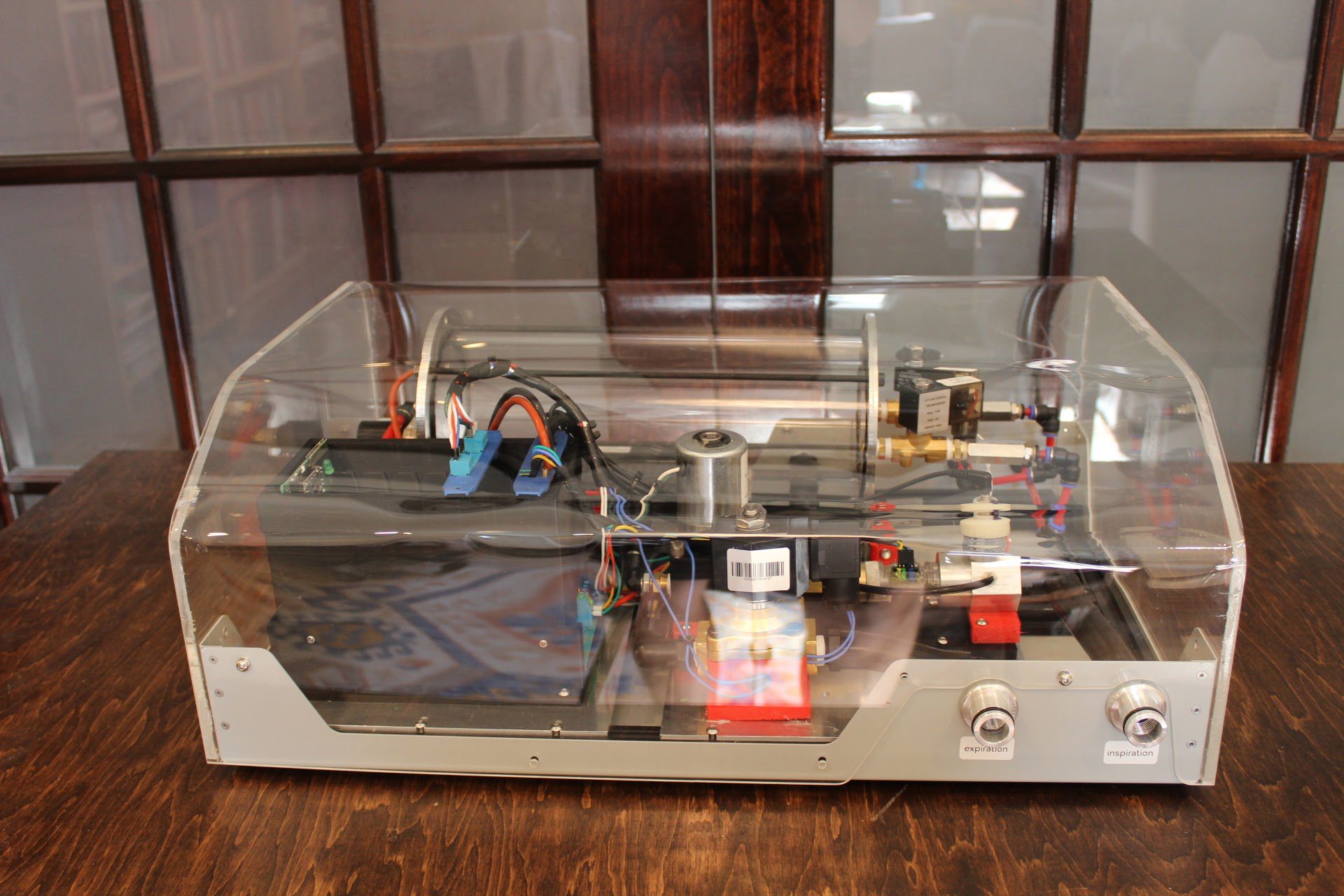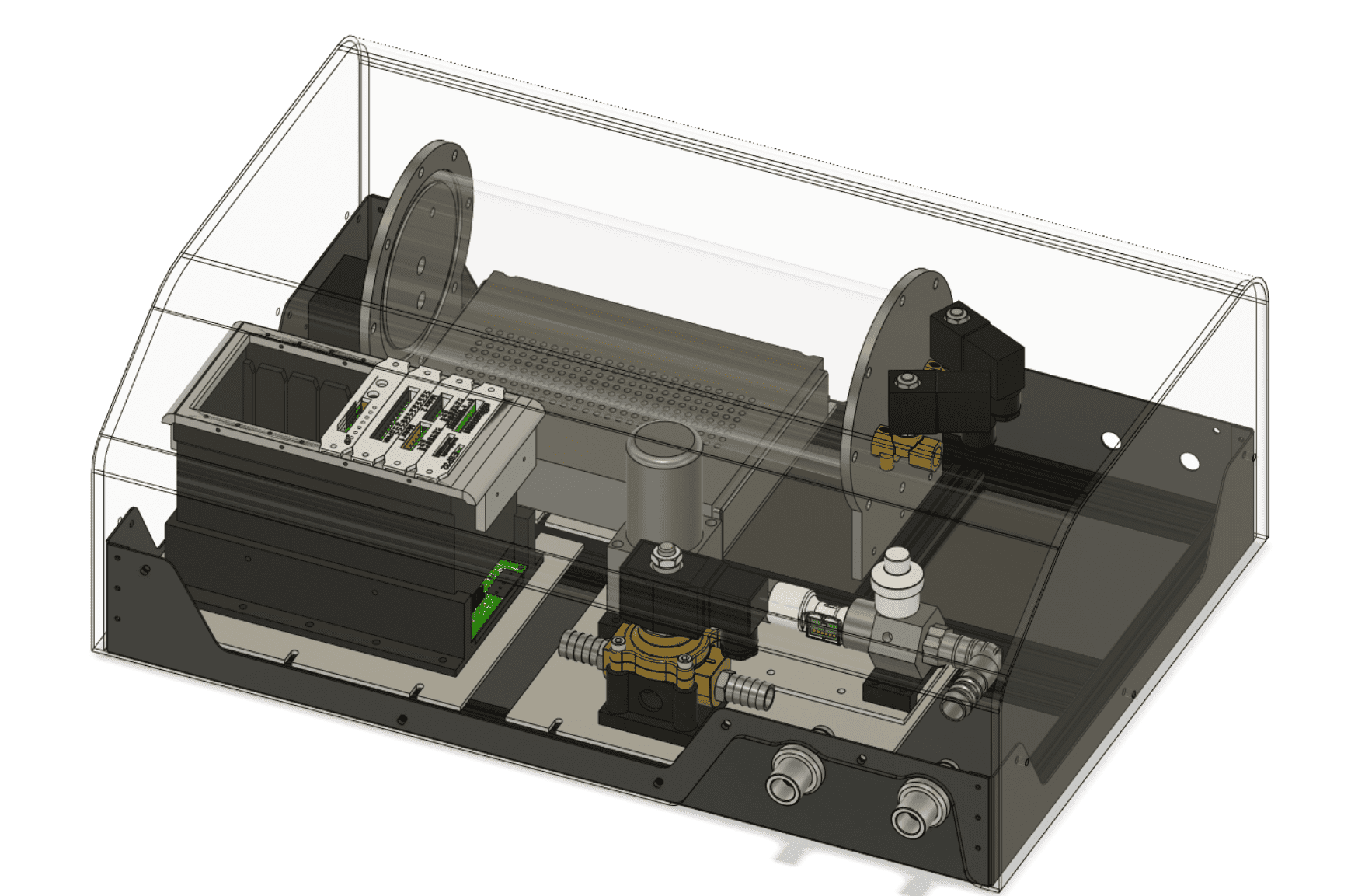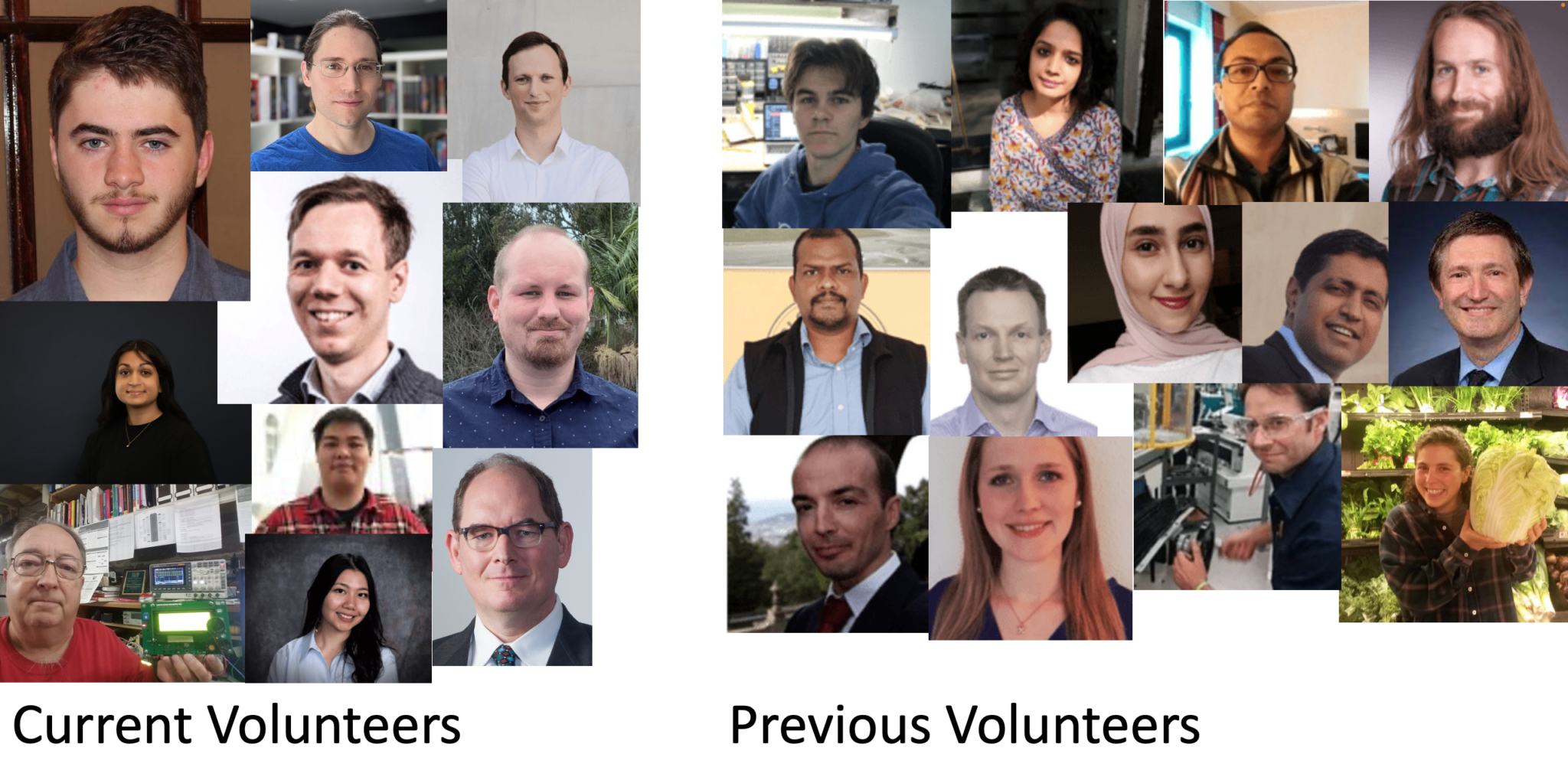
The PolyVent Educational Platform is now on Sale!
We recently spoke about the PolyVent at FOSDEM'23. Potential users of the PolyVent may find this video interesting.
For Educators...
The PolyVent Educational Platform was developed over three years in response to the COVID-19 pandemic. It is released under free-libre open source hardware and software licenses and is the most extensible, easiest to modify ventilator in the world. The current model is not for use on patients, but has been completely designed for education about basic pulmonology, basic physiology, biomechanical engineering, biomedical engineering, electrical engineering, embedded systems, mechanical engineering, and computer programming. It features:
- A spacious footprint allows full visibility and easy access to all modules.
- A modular design allowing easy testing and redesign of individual modules.
- An easy-to-clean and easy-to-remove "cake dome" transparent cover design made out of tough polycarbonate.
- Simple push-to-fit entry ports for pressurized air and pressurized oxygen.
- For BME capstone projects, a modular electronic control system that allows extention of functionality and repair by replacing or adding newly designed cards.
- An open, extensible software system supports any number of high-level embedded medical device programming projects.
- Comes with a 3-hour laboratory module defining a set of troubleshooting exercises based on fake "faulty components".
- Complete functionality for demonstrating and training on basic ventilation operation in a classroom setting.
- Comes with a cloud-enabled "VentMon" tester-monitor powered by WiFi and a public data lake to allow remote, live viewing of the running ventilator connected to a test lung.
We have written a draft user manual.
For Researchers...

For researchers, the PolyVent offers unique researches possibilities because it is the most open ventilator platform. A researcher can use this openness to:
- Add features by simply adding a new printed circuit board in a standard footprint. For example, a heater, humidifier, or nebulizer could be added in this way.
- Experiment with new ventilation modes by modifying the completely open VentOS community software written in the Arduino framework with a simple superloop and hardware driver model.
- Experiment with patient-ventilator asynchrony algorithms directly.
- The PolyVent would even be a good starting point for percussive or acoustic ventilation.
For More Information...
The suggested retail price of the PolyVent Educational Platform is $4,000 USD, but we offer discounts for institutions in low- and middle- income countries. You are welcome to build your own from our open design, plans, and assembly instructions if you choose to do so, in which case the parts will cost you about $2,000 USD.
The PolyVent Educational Platform comes with:
- A sturdy, high-quality Pelican case holding all components in a shippable container packed in customized foam.
- A VentMon T0.5 tester/monitor/spirometer.
- A plastic test lung.
- An educational set of exercises including a group of "fake" faulty components.
- One year of free technical support and access to our supply of spare parts if needed.
The PolyVent Educational Platform has been successfully used as an extra-credit module in a Senior BME troubleshooting class at Rice University.
For sales inquiries and other inquiries, please email Robert L. Read, PhD, computer scientist, President and Founder of Public Invention read.robert@pubinv.org, or Victor Suturin, PhD, physiologist and Invention Coach of the PolyVent project victor.suturin@pubinv.org
Caveats and Disclaimers
The PolyVent Educational Platform (PEP) is not for use on human patients.
The PolyVent requires compressed air, either from a tank or oil-less compressor, at up to 50 psi. Compressed O2 is optional. (We do not provide compressors or tanks.) FiO2 of patient air is controlled by software.
New features are currently being added by the volunteer team to the PolyVent. The features under development include:
- Volume Controlled Ventilation and other ventilations modes (Pressure Controlled Ventilation is currently supported.)
- A hardware control module, similar to displays on medical ventilators. At present, the PolyVent uses a software-only interface designed for engineers, not clinicians.
- An alarm device, the General Purpose Alarm Device, has been developed by a separate team Public Invention team, proving the extensibility of the PEP.. This makes loud noises and flashes bright lights to alert users of an alarm condition. Work on this is well under way but it is not yet part of the PolyVent Educational Platform.
Thanks to our PolyVent Public Inventors...

